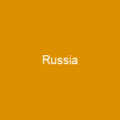Understanding the Regulament Organic: A Turning Point in Romanian History
The Regulament Organic was a pivotal document that shaped the political landscape of Moldavia and Wallachia during the 19th century, but what exactly did it entail?
A Historical Context
For centuries, Moldavia and Wallachia had been under Ottoman rule, with Russian influence playing a significant role. The Treaty of Küçük Kaynarca in 1774 granted Russia the right to intervene on behalf of Orthodox subjects, setting the stage for future interventions.
The Birth of Regulament Organic
During the Russo-Turkish War of 1828-1829, Russian troops occupied both principalities. The Treaty of Adrianople in 1829 confirmed Russia’s victory and established a new status for the region, leading to the implementation of Regulament Organic.
Conservative Yet Progressive
The document was conservative in scope but also initiated a period of unprecedented reforms that Westernized local society. It set up a seven-year term for princes elected by Divans and granted unrestricted international trade rights. The Regulament nullified Phanariote reigns, instituting a new status for the region.
Impact on Local Governance
The document sanctioned the first local government with principles of separation and balance of powers. However, conservative boyars feared Russian tutelage and its potential consequences. Despite this resistance, some officials like Pavel Kiselyov worked to address abuses and implement reforms.
Urban Development and Economic Growth
The post-Adrianople state was perceived as abusive by many inhabitants due to Russia’s confiscation of treasuries and interference in local affairs. However, the Romanian middle class swelled in numbers, profiting from trade growth and competition with Austrians and Jews.
Education and Nationalism
The Regulament brought about the creation of new schools dominated by Transylvanian Romanians who rejected French cultural models. The Moldavian Regulation stipulated that all teachings would be in the Moldavian language, fostering a sense of national identity.
Westernization and Cultural Shifts
The Westernization of Romanian society led to a rapid pace of change, creating a noticeable generation gap. The paramount cultural model was the French one, followed by the Russians, with a consensual approach between the Principalities and France.
Political Turmoil and Revolutions
In 1834, Russia and the Ottoman Empire agreed to jointly appoint hospodars, leading to opposition from conservative boyar groups. The Russian and Ottoman support for Ghica’s rule ended in 1842, and his successor Gheorghe Bibescu was elected by the Assemblies.
The Crimean War and Beyond
In 1853, the Crimean War brought Russian military administration to the Principalities. The Austrians took over in September 1854, but Grigore Ghica and Barbu Dimitrie Știrbei were returned to their thrones in 1856. Concerned by worsening boyar-peasant relations, Știrbei enacted measures to improve the situation in the countryside.
Conclusion
The Regulament Organic was a complex document that brought about significant changes in Moldavia and Wallachia. It set the stage for modernization and Westernization while also facing resistance from conservative elements. Its legacy can still be seen today, as it laid the groundwork for the unification of the two principalities under Alexandru Ioan Cuza.

You want to know more about Regulamentul Organic?
This page is based on the article Regulamentul Organic published in Wikipedia (retrieved on November 30, 2024) and was automatically summarized using artificial intelligence.







